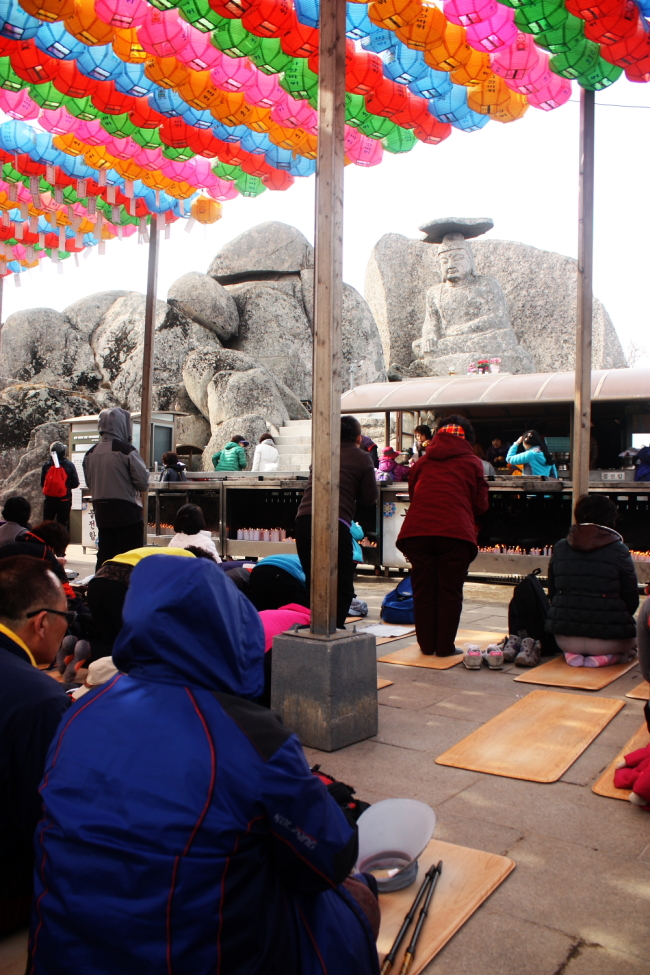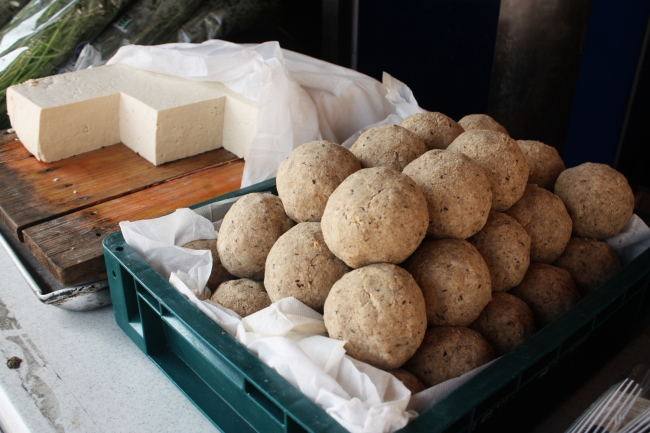Daegu, Korea’s “City of Apples,” is not generally known for its hiking, and yet a street in the northern outskirts of the city shows that the pastime has taken root, blossomed and begun to bear fruit. Both sides of Palgong-ro are lined with outdoor apparel stores, from foreign brands like Northface, Merrell and Mammut to local companies like Centerpole, Kolping and K2.
The commercial enclave is a testament to the popularity of Mount Palgongsan. Like many of Korea’s cities and natural features, the mountain has gone through several name changes over the years, at times being called Father Mountain, Central Mountain and Paulownia Tree Mountain.
It was designated a provincial park in 1980, but on local signage is dubbed “Palgongsan Natural Park.”
Daegu is a special metropolitan area, with the Palgongsan ridge forming the northern limit and the Nakdong River drawing the line to the west. These natural barriers may have had something to do with the formation of Daegu’s distinct dialect and local identity.
The mountain’s pine-covered slopes stretch like a screen perforated with patches of white rock, blocking out the northern regions entirely.
While there are three main starting points on the Daegu side of the park, the most trafficked is the Gatbawi entrance at the eastern end. Here bundled-up grannies display their wares along the sidewalk and at the start of the path, selling mountain herbs, flakey mushrooms, spring onions, yams and much more. Their best seller seemed to be yeot, chunks of hard taffy with peanuts, which serves as a fast-burning energy source.
A sign warned that this was an “Area where wild boar come and go,” but on this spring day a colorful crowd of weekend hikers looked like the ones fresh out of winter hibernation. It turned out that many were pilgrims heading up to the Gatbawi stone Buddha statue.
The well-traveled first stretch was being converted from a pathway into a road, but from Gwanamsa Temple the crowd thinned out and the path became a proper hiking trail.
Just half a kilometer further, past a boulder field, was the ridge and a view of the other side, which turned out to be a parking lot. (Those not so keen on hiking can drive up a road on the backside.)
From this low vantage point, where a chestnut vendor had set up shop, it was only a short amble up to the Gatbawi complex. But the path became rockier, with some of the surfaces covered in grooves like cracked molar teeth.
Gatbawi was swarming with spring visitors, some browsing at the Buddhist accessory store, others queued up at a stall selling candles, but most on the devotional platform ― a concrete structure grafted onto the side of the peak.
 |
Pilgrims complete a series of prostrations in front of the Gatbawi Buddha in early March at Palgongsan Natural Park, Daegu. (Matt Crawford/The Korea Herald) |
Far above the urban clamor, the devotees here were performing prostrations on mats while the singing of a monk and steady “clop, clop, clop” of a woodblock droned over the speakers. The focus of the pilgrims’ veneration was the Gatbawi statue.
Though created in the ninth century, it’s hard to find signs of weathering ― perhaps because of the windscreen rock behind it and the mysterious hat balancing on the head of this militant-looking “Medicine Buddha.” Below the statue, several people were trying to set coins into small grooves in the rock; 100-won coins of previous pilgrims appeared to be floating or stuck on with gum.
Past the temple-laden east end of the park there were only a few groups of serious hikers, all quite friendly. Progressing west from Gatbawi one has a view of the Palgong Country Club below and the radio towers of the highest peaks ahead.
 |
Rustic foods are sold near the Gatbawi entrance of Palgongsan Natural Park, including (from right) balls of biji (tofu residue), tofu and water parsley. (Matt Crawford/The Korea Herald) |
From end to end, the serpentine, undulating ridge stretches for 27.7 km, but to reach the highest peak of Biro-bong the legwork can be cut down to 2.4 km with a ride on the cable car, starting from Palgongsan Natural Park Office.
At the western end, meanwhile, are historical sites like Gasan Fortress and the Hanti area, once a refuge for persecuted Korean Catholics.
Getting there:
As the fourth-largest city in South Korea, Daegu has several train and bus stations. The KTX arrives at Dongdaegu Station, which is conveniently located for access to Palgongsan Natural Park. Exiting the station, turn right and go straight until you reach an overpass. Without crossing the street, descend the stairs on the right-hand side. From the bus stop, take No. 401 to reach the Gatbawi entrance.
The Rapid Line 1 bus also departs from below the Dongdaegu Station underpass for the ancient Donghwasa Temple at the middle entrance to the park. Bus No. 101 or 101-1 to the Pagyesa Temple west entrance can be caught from both Daegu and Dongdaegu stations.
By Matthew C. Crawford (
mattcrawford@heraldcorp.com)









